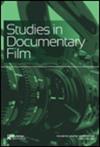Origin and dispersal of Homalictus (Apoidea: Halictidae) across Australia, Papua New Guinea and Pacific
IF 0.8
4区 综合性期刊
Q3 MULTIDISCIPLINARY SCIENCES
Transactions of the Royal Society of South Australia
Pub Date : 2020-01-02
DOI:10.1080/03721426.2020.1740957
引用次数: 2
Abstract
ABSTRACT The halictine bee genus Homalictus (Apoidea: Halictidae) is distributed broadly across south east Asia, Indonesia, Australia and the archipelagos of the Pacific. The group is well represented in the bee faunas of Australia and Papua New Guinea, but Homalictus is particularly important in the Pacific where it plays a keystone pollination role as the only endemic bee group in many islands. Understanding the origin and radiation of this genus is therefore important for understanding plant-bee co-evolution, not only in the Pacific, but the greater Oceania region. Previous studies have suggested that Homalictus has an Australian origin, and then dispersed northwards, but this is yet to be phylogenetically examined. Here we combine DNA sequences from the mitochondrial COI gene from Homalictus species from Papua New Guinea, the Pacific and Australia to infer the geographical and climatic origins of this group and subsequent dispersal events. Our results indicate a tropical origin for Homalictus in Australia, followed by multiple dispersals into the Pacific and subtropical, temperate and arid Australia. A tropical origin for Homalictus not only indicates the likely dispersal corridors for the ancestor of the group but has important implications for understanding social evolution in halictine bees.澳洲、巴布亚纽几内亚及太平洋的家蠓(总科:家蠓科)起源及分布
盐蜂属(halalictus)广泛分布于东南亚、印度尼西亚、澳大利亚和太平洋群岛。这个群体在澳大利亚和巴布亚新几内亚的蜜蜂群落中很有代表性,但Homalictus在太平洋地区尤为重要,因为它在许多岛屿上作为唯一的特有蜜蜂群体,起着关键的授粉作用。因此,了解这一属的起源和辐射对于了解植物与蜜蜂的共同进化非常重要,不仅在太平洋地区,而且在大洋洲地区。先前的研究表明,Homalictus起源于澳大利亚,然后向北分散,但这还有待于系统发育上的研究。在这里,我们结合了来自巴布亚新几内亚、太平洋和澳大利亚Homalictus物种的线粒体COI基因的DNA序列,来推断这一群体的地理和气候起源以及随后的扩散事件。我们的研究结果表明,Homalictus在澳大利亚起源于热带,随后多次扩散到太平洋和亚热带、温带和干旱的澳大利亚。Homalictus的热带起源不仅表明了该群体祖先可能的传播通道,而且对理解盐蜂的社会进化具有重要意义。
本文章由计算机程序翻译,如有差异,请以英文原文为准。
求助全文
约1分钟内获得全文
求助全文
来源期刊
CiteScore
1.40
自引率
12.50%
发文量
17
审稿时长
>12 weeks
期刊介绍:
Published since 1880, the Transactions of the Royal Society of South Australia is a multidisciplinary journal that aims to publish high quality, peer-reviewed papers of particular relevance to Australasia.
There is a particular focus on natural history topics such as: botany, zoology, geology, geomorphology, palaeontology, meteorology, geophysics, biophysics, soil science and environmental science, and environmental health. However, the journal is not restricted to these fields, with papers concerning epidemiology, ethnology, anthropology, linguistics, and the history of science and exploration also welcomed.
Submissions are welcome from all authors, and membership of the Royal Society of South Australia is not required.
The following types of manuscripts are welcome: Reviews, Original Research Papers, History of Science and Exploration, Brief Communications, Obituaries.

 求助内容:
求助内容: 应助结果提醒方式:
应助结果提醒方式:


